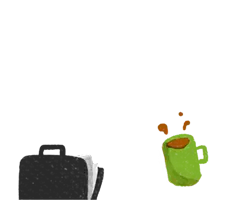Part 4Enforcement and other matters
Inspectors and health and safety medical practitioners: Inspectors
172Power to take samples and other objects and things
An inspector who enters a workplace or a former workplace under section 168 or 169 may take or remove a sample of any material, substance, or thing for analysis, or seize and retain any material, substance, or thing, for the purpose of—
- monitoring conditions in the workplace; or
- determining the nature of any material or substance in the workplace; or
- determining whether relevant health and safety legislation has been, is being, or is likely to be complied with; or
- gathering evidence to support the taking of enforcement action.
This section does not allow an inspector to take a sample from a person's body unless the inspector has that person's informed consent to the taking of the sample.
If an inspector removes or retains any sample, material, substance, or thing under subsection (1), the inspector must,—
- at the time he or she removes or retains the sample, material, substance, or thing or as soon as practicable after doing so, give the PCBU written notice of—
- what has been (or is being) removed or retained; and
- why it has been (or is being) removed or retained; and
- where it will be kept in the meantime; and
- what has been (or is being) removed or retained; and
- subject to subsections (4) and (5), within 5 working days of removing or retaining any sample, material, substance, or thing, give the PCBU written notice of whether the inspector intends to return it or destroy it.
If it is practicable to do so, the inspector must return the sample, material, substance, or thing to its owner—
- when it is no longer required for any purpose under relevant health and safety legislation (or any other enactment); or
- if a court earlier orders its return.
The inspector may destroy any removed or retained sample, material, substance, or thing if—
- it is perishable and has become rotten or has otherwise deteriorated; or
- it is perishable and is likely to become rotten or perish before it can be dealt with under subsection (4); or
- it is likely to pose a risk to public health.
In addition, sections 154, 155, and 159 of the Search and Surveillance Act 2012 apply in relation to any sample, material, substance, or thing removed or retained.
The provisions of the Search and Surveillance Act 2012 referred to in subsection (6) apply as if—
- the reference in section 159(1) of that Act to a person described in section 156(2) were to—
- any person from whom the sample, material, substance, or thing was seized:
- the PCBU:
- any other person who, in the opinion of the inspector, may be affected by the forfeiture of the sample, material, substance, or thing; and
- any person from whom the sample, material, substance, or thing was seized:
- references to a thing were to any sample, material, substance, or thing; and
- references to seized or produced were to removed or retained; and
- references to the person in whose custody the thing is were to the inspector; and
- all other necessary modifications were made.
Any sample, material, substance, or thing forfeited to the Crown may be destroyed or otherwise disposed of as the inspector directs.


